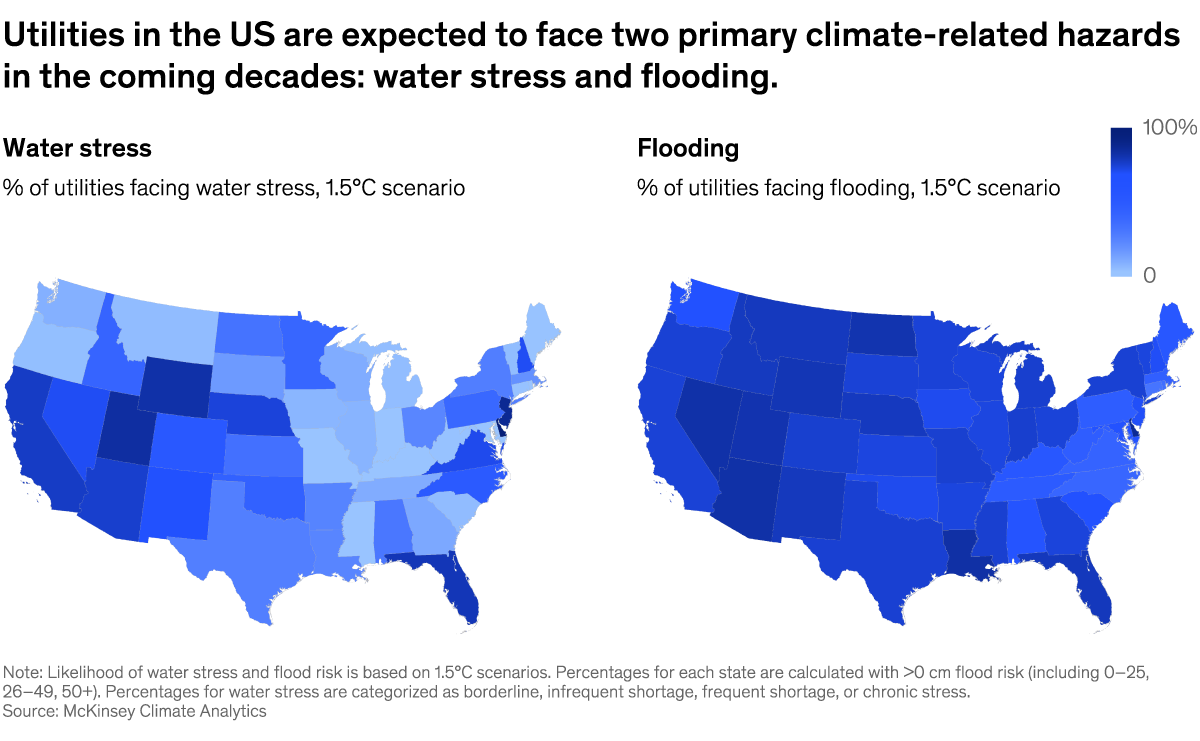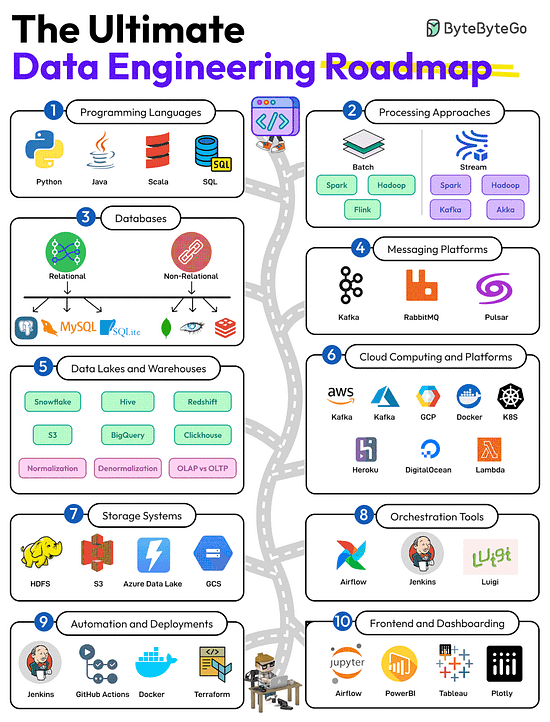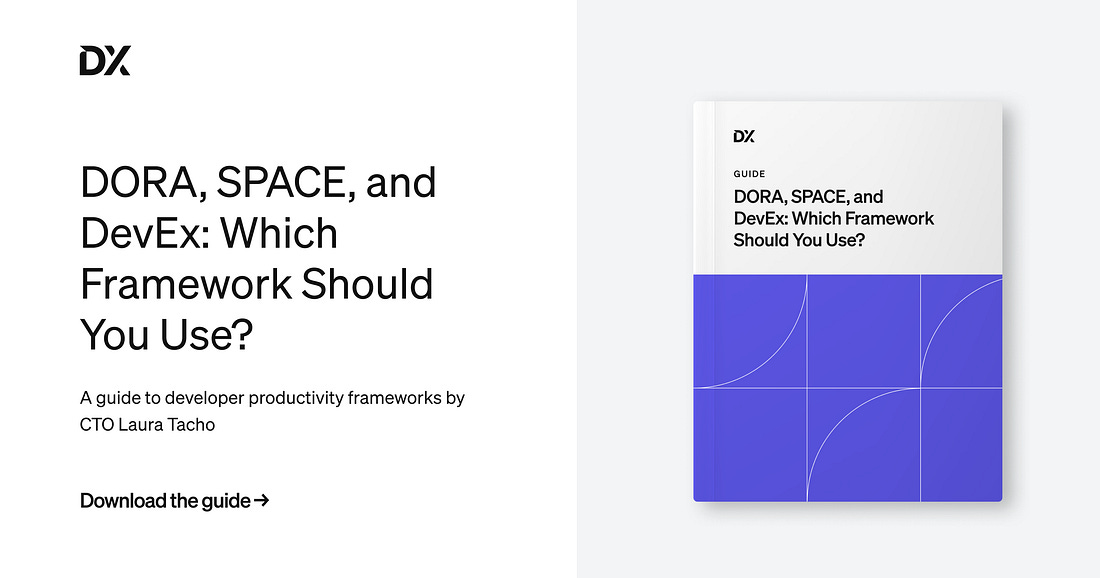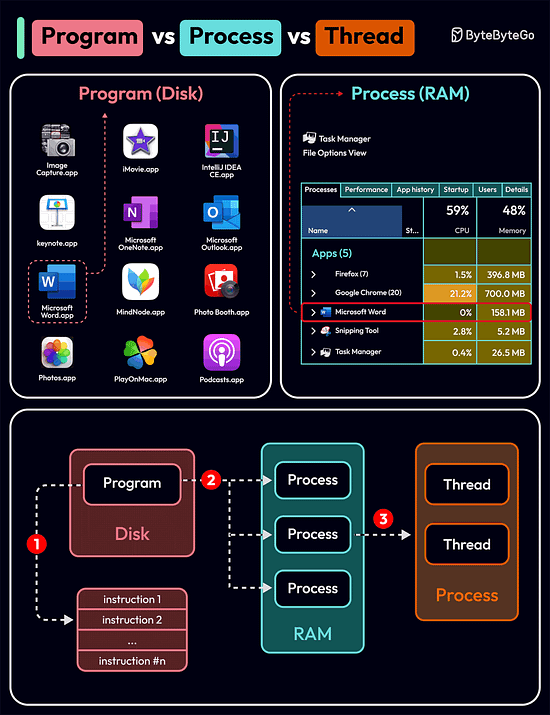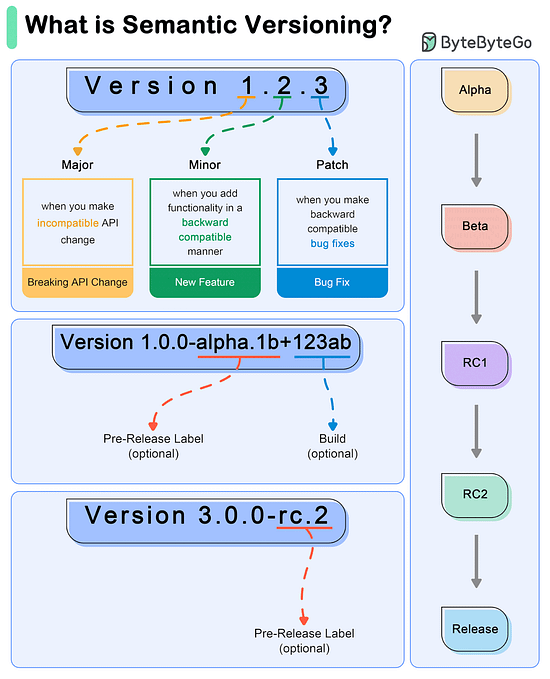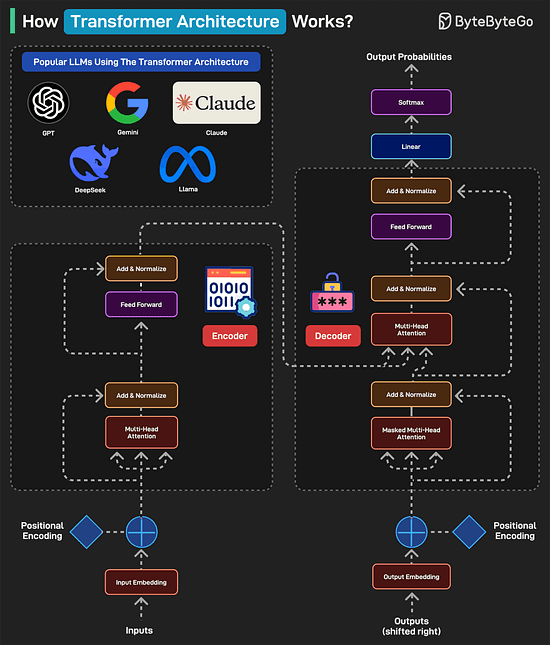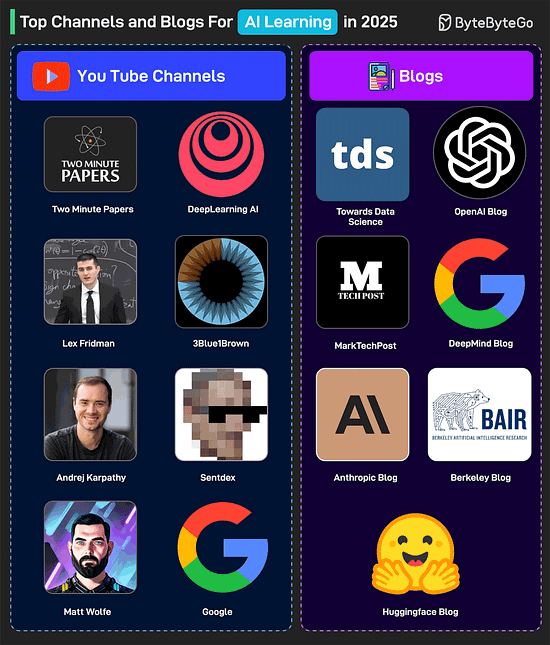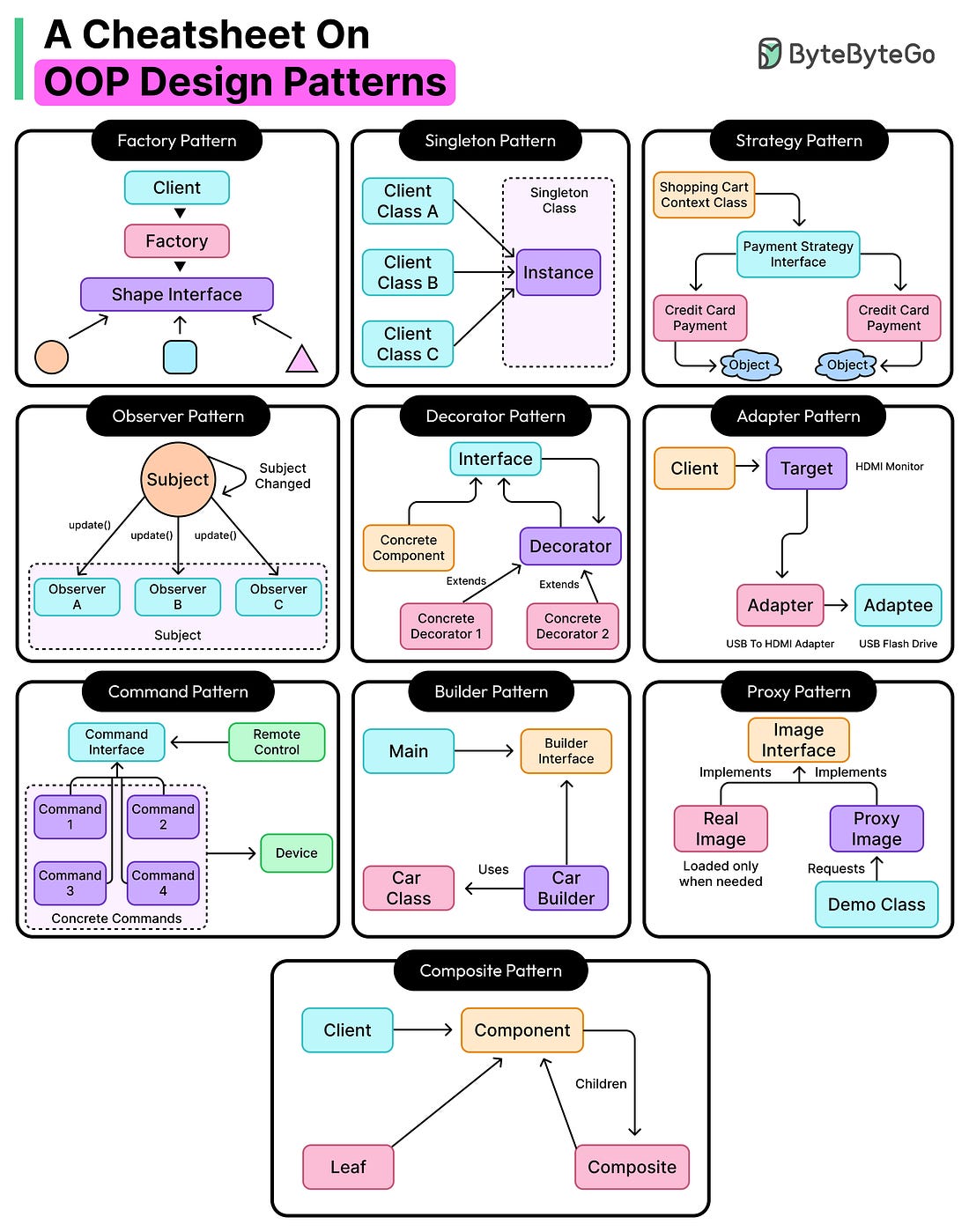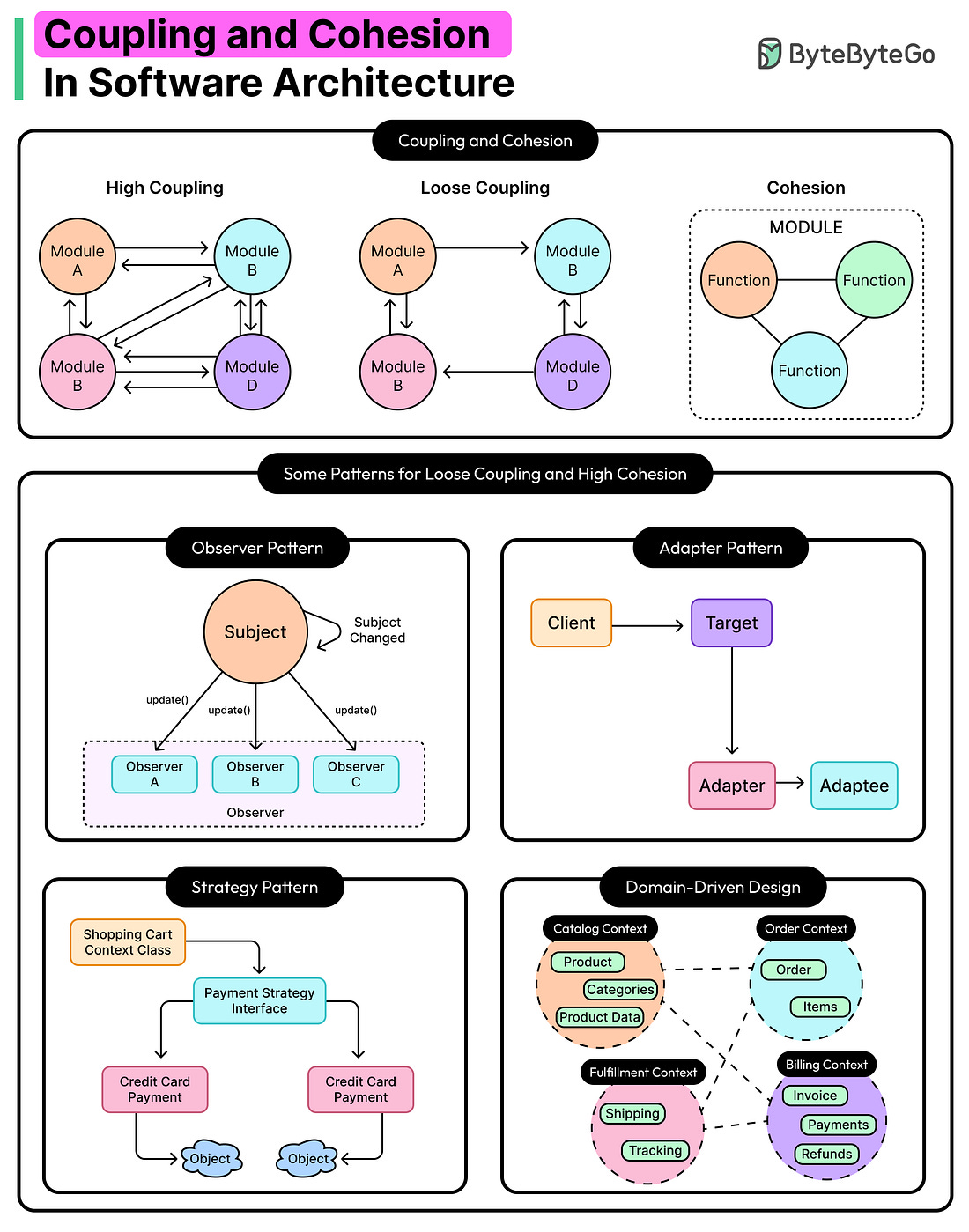Archives
- By thread 5370
-
By date
- June 2021 10
- July 2021 6
- August 2021 20
- September 2021 21
- October 2021 48
- November 2021 40
- December 2021 23
- January 2022 46
- February 2022 80
- March 2022 109
- April 2022 100
- May 2022 97
- June 2022 105
- July 2022 82
- August 2022 95
- September 2022 103
- October 2022 117
- November 2022 115
- December 2022 102
- January 2023 88
- February 2023 90
- March 2023 116
- April 2023 97
- May 2023 159
- June 2023 145
- July 2023 120
- August 2023 90
- September 2023 102
- October 2023 106
- November 2023 100
- December 2023 74
- January 2024 75
- February 2024 75
- March 2024 78
- April 2024 74
- May 2024 108
- June 2024 98
- July 2024 116
- August 2024 134
- September 2024 130
- October 2024 141
- November 2024 171
- December 2024 115
- January 2025 216
- February 2025 140
- March 2025 220
- April 2025 233
- May 2025 239
- June 2025 303
- July 2025 183
-
License successfully activated.
Dear info@learn.odoo.com,
Thank you for your interest in OROPOS. Please find attached license for OROPOS
License details:Product: OROPOS
Terminal Key: 7F858226-6132-8B49-8E0F-7F9585005FD8
Valid to: 20 May 2025
Thanks.OROPOS Team
by noreply@shop.orocube.com - 06:42 - 20 Apr 2025 -
Orocube shop registration successful.
Hi info@learn.odoo.com,
Your Orocube shop registration is successful. Below is your account details:
Login email: info@learn.odoo.com
Password: @Z9vBBk6zFukgEp
https://shop.orocube.com/login
Thanks.OROPOS Team
by noreply@shop.orocube.com - 06:42 - 20 Apr 2025 -
good reputation supplier
Hi info
Nice day
hot selling products for your market.
It is our pleasure to offer you some of our (hot-selling ) products for your market. Trust you like them .our market analysis sure these products will be hot sale in your market. Would you like to try any of them?
Please check the picture of the hot sale item
fully hope we have a chance to serve you..
yours
Jingling Zitterbart
by "Jingling Zitterbart" <udithmelar906@gmail.com> - 05:07 - 20 Apr 2025 -
Professional design and manufacturing of pipe hangers, U-shaped hangers, riser clamps, etc.
Dear info,
I’m anna from WENZHOU YIERTE MACHINERY CO., LTD. Our company founded in 2005, is professionally engaged in researching, designing, developing and manufacturing Pipe Hangers, Clevis Hangers, Loop Hangers, Riser Clamps,etc. which used for fire equipment, shipbuilding, petroleum industry, as well as other normal and special applications.Our company has approved UL/FM certification.
Located in Wenzhou, Zhejiang Province, the most economically dynamic Yangtze River Delta with high convenient transportation.
Yierte supplies and OEM for international market, especially the United States, Canada, Philippine, etc..
If any inquirys, just feel free to send me.
Looking forward to your reply.
Best regards!
Anna
by "Favja hah Nkaj" <3047892@gmail.com> - 02:17 - 20 Apr 2025 -
LAST CALL !!! EFFECTIVE PRESENTATION SKILLS USING NLP (7 & 8 May 2025)
Please call 012-588 2728
email to pearl-otc@outlook.com
HYBRID PUBLIC PROGRAM
EFFECTIVE PRESENTATION
SKILLS USING NLP
(** Choose either Zoom OR Physical Session)
Remote Online Training (Via Zoom) &
Wyndham Grand Bangsar Kuala Lumpur Hotel (Physical)
(SBL Khas / HRD Corp Claimable Course)
Date : 7 May 2025 (Wed) | 9am – 5pm By Alvin
8 May 2025 (Thu) | 9am – 5pm
. .INTRODUCTION:
No matter how advanced the world and technology becomes, nothing can compare to the power of a human being standing in front of a group to present ideas and deliver a message. Even organizations like Apple & Tesla need the late Steve Jobs and Elon Musk to present in person and not replace their presence with automation or AI. If you can improve your presentation skills, you will remain relevant to your industry and help your company remain competitive against increased competition. This workshop helps you sharpen your presentation skills using NLP (Neuro-Linguistic Programming) tools which you will use throughout the program.
OBJECTIVE:
In this program, you will learn how to:
a) Transform yourself into a competent and confident presenter
b) Enhance your presentation opening, content and close to impact your listeners
c) Overcome objections and questions professionally
d) Handle difficult audiences using the power of the subconscious mind
APPROACH:
30% interactive lecture, 55% activities and live presentations, 15% group discussions
Participants will be presenting after every key session, and not just at the end of the program.
Can be conducted 100% in English, 100% in BM or in a mixture of both.
Suggested highlights (subject to venue and participant dynamics):
Selected strategies from Dr. Alvin’s books, interactive lecture, group activities, role-plays, partner discussions, behavioral tools application, case dissection and analysis, out-of-hall assignments, inter-group challenges, presentations of action plans.
DURATION:
This is a 2 days highly interactive, entertaining and useful course running from 9.00 am to 5.00 pm. Daily.
OUTLINE OF WORKSHOP
Part 1: How to Open and Close your Presentation with Power
- Attempting your first presentation? Here’s how to overcome nervousness
- Left-brain and right-brain openings you can use to attract your listeners
- Various types of openings and their psychological impact on your listeners
- Include this exact phrase in your close and you can tackle any topic
- NLP strategies to give your listeners a ‘wow’ feeling when you close
Interactive session, behavioral tools application and individual presentations on openings and closings
Part 2: How to make your Content Organized and Interesting
- Develop content that is organized and easy to follow
- Remove contents that are not useful
- Tactics to get your listeners to follow you with rapt attention
- Enhance your content structure to suit serious vs relaxed audiences
- Objective of the presentation : what do you want to achieve with your content?
- Head vs heart : how to use NLP to touch your listeners
Interactive session, in-class demonstrations, group presentations on content structure
Part 3: Items and Props for more Effective Presentations
- Add psychological colors and pictures into your power-point slides
- Lead your listener’s thoughts and feelings using these items
- Voice strategies : how you can make technical topics come alive
- Influence your audience with your body language
- NLP story-telling skills to deliver your message effectively
Interactive session, case-discussions, simulations and applications, group presentations
Part 4: Advanced approaches in Connecting with your Audience
- Deliver your final presentation in front of the class
- Remember what to say and not depend so much on notes
- Tackle tough questions using NLP’s ‘Seven Secrets’
- Environment : how to use your surroundings to enhance your presentation
- Overcoming objections from those who purposely want to challenge you
- Hands-on tools you can use everyday
Interactive session, role-plays, group assignment and final presentations
** Certificate of attendance will be awarded for those who completed the course
ABOUT THE FACILITATOR
Dr. Alvin
D.V.M. (UPM, 1998)
Corporate Trainer since 2001
Certified Practitioner of NLP
Certified Practitioner of Neuro-Semantics
Certified Practitioner of Hypnosis and Timelines
Diploma in Stress Management
Diploma in Psychological Counseling
President of Sunway Toastmasters (2003-2004)
Area Governor of Toastmasters (2007-2008)
Author of "How to Hypnotize your Husband"
(Gerak Budaya Publications, 2011)
Author of “Accelerating Corporate Excellence”
Specializing in NLP-based Programs:
Stress, Time and Anger Management
Customer Service
Results-focused Team-building
Interpersonal Communication & Influence
Presentation Skills
Thinking Skills (Critical and Creative Thinking Decision-making and Problem-solving)
Sales and Negotiation
Dr. Alvin has been a full-time corporate trainer since 2001. He is a PSMB-certified trainer (2007), a Certified Practitioner of NLP and a Certified Practitioner of Neuro-Semantics (International Society of Neuro-Semantics, 2006). He holds a Diploma in Stress Management (Institute of Health Care Administration IHCA India, 2004) and a Diploma in Psychological Counseling (IHCA India, 2002). He is the author of 3 locally-published books (under Gerak Budaya Publications, Pelanduk Publications and Southern Cross Roads Management Trainers). Being the past Vice-President of Education (2002-2003) and President (2003-2004) of the Sunway Toastmasters Club and also having served as an Area Governor (2007-2008) under Toastmasters, the worldwide premier public speaking organization, he uses this experience to make his training workshops engaging and uniquely interesting. Dr. Alvin has also been interviewed on air over Red FM and Capital FM, and featured in the Star. He has conducted seminars in Sabah, Sarawak, Thailand and throughout Peninsular Malaysia.
Track Record
The organizations which he has trained in-house include Bank Negara Malaysia, The Ministry of Defense, The Ministry of Health, Kementerian Luar Negeri, M’sian Qualifications Agency, Penang Development Corp, Majlis Perbandaran Seberang Prai, Majlis Perbandaran Nilai, DBKL, USM, Uni Tek Petronas, Lim Kok Wing University, MIDA, KL Airport Services, MRT Corp, Tenaga Nasional Bhd, Jabatan Kesihatan Negeri Perak, Jabatan Kesihatan Negeri Selangor Bahagian Farmasi, Kousa, SAINS Sarawak Information Systems, IOI Group, Knight Frank, Digi, Ericksson, Sony, Honda, Toyota, Isuzu, Sime Darby Healthcare, Tropicana Medical Center, Gleneagles Hospital, KPJ Hospital, Perak Community Specialist Hospital, Cheras Rehabilitation Hospital, MyWam, TopGlove, Karex, Becton Dickinson, MyMedic, Hovid, Labplas Jebsen & Jessen, The Securities Commission, RHB Bank, OCBC Bank, Hong Leong Bank, Ace Jerneh, UOB Bank, Alliance Bank, HSBC, Bank Simpanan Nasional, Exim Bank, Bangkok Bank, Pacific and Orient Insurance, Sabah Development Bank, Legoland, Ice Holidays, JTI, Siegwerk, Jabil, Salutica Berhad, Infineon, Favelle Favco, VS Plus, VS Industry, CISCO, Lumut Port, Maestro Swiss, Nintex, Saudi Food, Solmax, Entegris, iLens, NS Bluescope, GS Paper, Wuhan Fiberhome, Sumitomo, Intel, Panasonic, Dufu, Finisar, Trane, KCC Development, Dan Kaffe, HCM, Fibertex, Encompass, Nationgate, Bose, Chuan Sin Spritzer, Sapura Kenchana, GE-PAP, Harvik, NorseChem, Arrow, Ajiya, Mondelez, Coilcraft, Asia Roofing, PNE Micron, Avago, All Cosmos, Taiyo, IOI AcidChem, Kossan, Teleplan, World Kitchen, OSRAM, Samtec, Amp Corporation, Frencken Mechatronics, RK South Asia, Jutasama, Toyo Engineering, HP Manufacturing, SKF, Robert Bosch, Circular Agency, Serba Dinamik, AGS Fourwinds, Ark Empire, MS Elevators and many more which are not listed here.
Approach
In our programs, we use the experiential approach involving:
30% interactive lecture
40% activities
15% group discussions
15% action-plan presentations
Programs can be conducted 100% in English, 100% in BM or in a mixture of both.
Programs mixed with conversational Cantonese are also available upon request.
Our programs may include (subject to venue and participant dynamics):
Selected strategies from Dr. Alvin’s books, interactive lectures, group activities, personality tests, role-plays, volunteer demos, partner discussions, behavioral tools application, case dissection and analysis, out-of-hall assignments, inter-group challenges, presentations of action plans and much more.
(SBL Khas / HRD Corp Claimable Course)
TRAINING FEE
14 hours Remote Online Training (Via Zoom)
RM 1,296.00/pax (excluded 8% SST)
2 days Face-to-Face Training (Physical Training at Hotel)
RM 1,950.00/pax (excluded 8% SST)
Group Registration: Register 3 participants from the same organization, the 4th participant is FREE.
(Buy 3 Get 1 Free) if Register before 25 April 2025. Please act fast to grab your favourite training program!We hope you find it informative and interesting and we look forward to seeing you soon.
Please act fast to grab your favorite training program! Please call 012-588 2728
or email to pearl-otc@outlook.com
Do forward this email to all your friends and colleagues who might be interested to attend these programs
If you would like to unsubscribe from our email list at any time, please simply reply to the e-mail and type Unsubscribe in the subject area.
We will remove your name from the list and you will not receive any additional e-mail
Thanks
Regards
Pearl
by "sump@otcmsb.com.my" <sump@otcmsb.com.my> - 11:03 - 19 Apr 2025 -
The week in charts
The Week in Charts
Utilities face water stress, B2B telecom, and more Share these insights
Did you enjoy this newsletter? Forward it to colleagues and friends so they can subscribe too. Was this issue forwarded to you? Sign up for it and sample our 40+ other free email subscriptions here.
This email contains information about McKinsey's research, insights, services, or events. By opening our emails or clicking on links, you agree to our use of cookies and web tracking technology. For more information on how we use and protect your information, please review our privacy policy.
You received this email because you subscribed to The Week in Charts newsletter.
Copyright © 2025 | McKinsey & Company, 3 World Trade Center, 175 Greenwich Street, New York, NY 10007
by "McKinsey Week in Charts" <publishing@email.mckinsey.com> - 03:28 - 19 Apr 2025 -
Professional display stand manufacturer with 18 years experience
Hi,dear
this is David(sales manager) from suzhou dimadisplay factory.
our company is one professional display stand manufacturer with 18 years experience.Our main products are roll up stand, pop up stand, flag pole and so on.
especially new product Ultra Thin Light Box.
wish we can be your one-stop display system supplier to help you expand your business.
we will keep providing high quality display hardware and competitive price.
our company website is www.dimadisplay.com
pls no hesitate to contact me.
tks
by "sales09" <sales09@displaytalks.com> - 02:54 - 19 Apr 2025 -
Quick Rate Info
Hi,
Hope you're doing well. This's J from Hong-ocean. It's been a while since we last connected, and I wanted to reach out to see how things are going. Just wanted to touch base and remind you that we're here to support you with your shipping needs. If you have any questions or specific requirements, feel free to let me know.
We have preferential policies with shipping companies- by way of deducting tariff quotes
Also, I wanted to share some recent price updates(40'):
XIAMEN TO LA : O/F 1100/40HQ
SHANGHAI TO NYC : O/F 2100/40HQ
NINGBO TO SAVANNAH: O/F 2100/40HQ
These rates are valid until Apr 30th
And of course it's not just China, any country we can. If you receive this message, please reply with the number 1 or whatever you prefer!
Looking forward to hearing from you.
Best regards,
J
by "Jeffery" <yunus@mtlhcargos.com> - 02:42 - 19 Apr 2025 -
Matteo provides a comprehensive LED display training system for the beginner
Hi,
I hope this email finds you well. Our company specializes in LED screens for more than 18 years. We take pride in providing great after-sales services from China and Spain to ensure customer satisfaction.
Should you have any questions or inquiries regarding our products or services, please do not hesitate to contact us.
Thanks!

Christina
WhatsApp:+19039128872
SHENZHEN MATTEO TECHNOLOGY CO., LTD
by "sales03" <sales03@mateoled.com> - 02:07 - 19 Apr 2025 -
Hi, this is Sally Lin from Shantou Yudong packaging
Hi info,
Good day !
This is Sally Lin from Yudong Packaging,a OEM/ODM cosmestics packaging manufacturer in China.
Many new products at our website:https://www.yudongpack.com/,Please
check them quickly!If you don't have time to check our website,we can send you our
new prodcuts.Would you like to have a look ?
Yours Sally Lin
Shantou Yudong Packaging Products Co.,ltd
E-mail : sally@styudong.com
WhatsApp /Wechat: +86-13592884136
Website: www.styudong.com
by "Bob" <Bob@styudongpack.com> - 01:27 - 19 Apr 2025 -
How to prepare your company for cascading risks
Prepare for second-order effects Brought to you by Alex Panas, global leader of industries, & Axel Karlsson, global leader of functional practices and growth platforms
Welcome to the latest edition of McKinsey Classics. We hope you find our perspectives useful. Let us know what you think at Alex_Panas@McKinsey.com and Axel_Karlsson@McKinsey.com.
—Alex and Axel
April 2025
In honor of the 60th birthday of McKinsey Quarterly, the McKinsey Classics newsletter is dedicating a full year to enduring Quarterly articles that were ahead of their time. Enjoy, and check out other celebration highlights such as special themed issues and bonus digital features.
Today’s organizations face no shortage of risks. But companies that think their problems are limited to the most immediate threats should think again. Indeed, risk managers often fail to anticipate how acute, obvious threats can multiply across the entire value chain and wreak even greater havoc.
Consider the global financial crisis of 2008, whose lessons, underscored in this 2009 McKinsey Quarterly classic, can be instructive for global companies today. In the wake of the 2008 crisis, Canada’s currency appreciated 30 percent in value versus the US dollar. Manufacturers in Canada knew the currency change would affect their cost competitiveness in US markets. But what they didn’t plan for was the flurry of cross-border shopping from Canadian consumers, who started purchasing big-ticket items in the United States, which forced Canadian companies to lower their prices at home. The combined effects of profit compression in both Canada and the United States did far more damage than these companies had initially anticipated.
Understanding how risk can cascade across a company’s value chain—including its suppliers, distribution channels, and customers—and how it might change the dynamic with competitors is crucial for developing a comprehensive risk plan. For more on how executives can better prepare for second-order effects, read Eric Lamarre’s 2009 classic, “Risk: Seeing around the corners.”—Edited by Drew Holzfeind, editor, Chicago
Is there a classic business topic you’d like us to feature? Send us an email—we’d love to hear from you.
Share these insights
Did you enjoy this newsletter? Forward it to colleagues and friends so they can subscribe too. Was this issue forwarded to you? Sign up for it and sample our 40+ other free email subscriptions here.
This email contains information about McKinsey's research, insights, services, or events. By opening our emails or clicking on links, you agree to our use of cookies and web tracking technology. For more information on how we use and protect your information, please review our privacy policy.
You received this email because you subscribed to our McKinsey Classics newsletter.
Copyright © 2025 | McKinsey & Company, 3 World Trade Center, 175 Greenwich Street, New York, NY 10007
by "McKinsey Classics" <publishing@email.mckinsey.com> - 12:28 - 19 Apr 2025 -
EP159: The Data Engineering Roadmap
EP159: The Data Engineering Roadmap
Data engineering has become the backbone of effective data analysis. It involves managing, processing, and optimizing data to derive actionable insights.͏ ͏ ͏ ͏ ͏ ͏ ͏ ͏ ͏ ͏ ͏ ͏ ͏ ͏ ͏ ͏ ͏ ͏ ͏ ͏ ͏ ͏ ͏ ͏ ͏ ͏ ͏ ͏ ͏ ͏ ͏ ͏ ͏ ͏ ͏ ͏ ͏ ͏ ͏ ͏ ͏ ͏ ͏ ͏ ͏ ͏ ͏ ͏ ͏ ͏ ͏ ͏ ͏ ͏ ͏ ͏ ͏ ͏ ͏ ͏ ͏ ͏ ͏ ͏ ͏ ͏ ͏ ͏ ͏ ͏ ͏ ͏ ͏ ͏ ͏ ͏ ͏ ͏ ͏ ͏ ͏ ͏ ͏ ͏ ͏ ͏ ͏ ͏ ͏ ͏ ͏ ͏ ͏ ͏ ͏ ͏ ͏ ͏ ͏ ͏ ͏ ͏ ͏ ͏ ͏ ͏ ͏ ͏ ͏ ͏ ͏ ͏ ͏ ͏ ͏ ͏ ͏ ͏ ͏ ͏ ͏ ͏ ͏ ͏ ͏ ͏ ͏ ͏ ͏ ͏ ͏ ͏ ͏ ͏ ͏ ͏ ͏ ͏ ͏ ͏ ͏ ͏ ͏ ͏ ͏ ͏ ͏ ͏ ͏ ͏ ͏ ͏ ͏ ͏ ͏ ͏ ͏ ͏ ͏ ͏ ͏ ͏ ͏ ͏ ͏ ͏ ͏ ͏ ͏ ͏ ͏ ͏ ͏ ͏ ͏ ͏ ͏ ͏ ͏ ͏ ͏ ͏ ͏ ͏ ͏ ͏ ͏ ͏ ͏ ͏ ͏ ͏ ͏ ͏ ͏ ͏ ͏ ͏ ͏ ͏ Forwarded this email? Subscribe here for moreHow to monitor containerized applications in Azure (Sponsored)
In this eBook, you’ll learn how to deploy and monitor containerized applications using Azure and Datadog. Start monitoring AKS cluster status, AKS control plane, and understand critical AKS resource metrics. Plus, get best practices on collecting and tracking observability data across your container environment, and be alerted to performance issues and potential threats automatically.
This week’s system design refresher:
The Data Engineering Roadmap
Popular interview question: What is the difference between Process and Thread?
What do version numbers mean?
How Transformers Architecture Works
Top YouTube Channels and Blogs for AI Learning in 2025
SPONSOR US
The Data Engineering Roadmap
Data engineering has become the backbone of effective data analysis. It involves managing, processing, and optimizing data to derive actionable insights.
Here’s a roadmap that can help you get better at data engineering:
Programming Languages
Learn SQL and a few programming languages like Python, Java, and Scala.Processing Techniques
Learn batch processing tools like Spark and Hadoop and stream processing tools like Flink and Kafka.Databases
Focus on both relational and non-relational databases. Some examples are MySQL, Postgres, MongoDB, Cassandra, and Redis.Messaging Platforms
Master the use of platforms like Kafka, RabbitMQ, and Pulsar.Data Lakes and Warehouses
Learn about various data lake and warehousing solutions such as Snowflake, Hive, S3, Redshift, and Clickhouse. Also, learn about Normalization, Denormalization, and OLTP vs OLAP.Cloud Computing Platforms
Master the use of cloud platforms like AWS, Azure, Docker, and K8SStorage Systems
Learn about the key storage systems like S3, Azure Data Lake, and HDFSOrchestration Tools
Learn about orchestration tools like Airflow, Jenkins, and LuigiAutomation and Deployments
Learn automation tools such as Jenkins, Github Actions, and Terraform.Frontend and Dashboarding
Master the use of tools like Jupyter Notebooks, PowerBI, Tableau, and Plotty
Over to you: What else will you add to the Data Engineering Roadmap?
DORA, SPACE, and DevEx: Which framework should you use? (Sponsored)
DORA, SPACE, DevEx, and the more recent DX Core 4 framework, all help leaders define and measure developer productivity. But each framework comes with tradeoffs, so which one should you use? Read this guide from DX CTO Laura Tacho to understand the differences between the frameworks, which ones work best for different teams, and how to implement them.
Read this guide for insight into:
Which developer productivity frameworks are widely used
Who should use each framework
How to implement each framework
What to consider when selecting the right framework for your team or organization
Popular interview question: What is the difference between Process and Thread?
To better understand this question, let’s first take a look at what is a Program. A Program is an executable file containing a set of instructions and passively stored on disk. One program can have multiple processes. For example, the Chrome browser creates a different process for every single tab.
A Process means a program is in execution. When a program is loaded into the memory and becomes active, the program becomes a process. The process requires some essential resources such as registers, program counter, and stack.
A Thread is the smallest unit of execution within a process.
The following process explains the relationship between program, process, and thread.
The program contains a set of instructions.
The program is loaded into memory. It becomes one or more running processes.
When a process starts, it is assigned memory and resources. A process can have one or more threads. For example, in the Microsoft Word app, a thread might be responsible for spelling checking and the other thread for inserting text into the doc.
Main differences between process and thread:
Processes are usually independent, while threads exist as subsets of a process.
Each process has its own memory space. Threads that belong to the same process share the same memory.
A process is a heavyweight operation. It takes more time to create and terminate.
Context switching is more expensive between processes.
Inter-thread communication is faster for threads.
Over to you:
Some programming languages support coroutine. What is the difference between coroutine and thread?
How to list running processes in Linux?
What do version numbers mean?
Semantic Versioning (SemVer) is a versioning scheme for software that aims to convey meaning about the underlying changes in a release.
SemVer uses a three-part version number: MAJOR.MINOR.PATCH.
MAJOR version: Incremented when there are incompatible API changes.
MINOR version: Incremented when functionality is added in a backward-compatible manner.
PATCH version: Incremented when backward-compatible bug fixes are made.
Example Workflow
Initial Development Phase
Start with version 0.1.0.First Stable Release
Reach a stable release: 1.0.0.Subsequent Changes
Patch Release: A bug fix is needed for 1.0.0. Update to 1.0.1.Minor Release: A new, backward-compatible feature is added to 1.0.3. Update to 1.1.0.
Major Release: A significant change that is not backward-compatible is introduced in 1.2.2. Update to 2.0.0.
Special Versions and Pre-releases
Pre-release Versions: 1.0.0-alpha, 1.0.0-beta, 1.0.0-rc.1.
Build Metadata: 1.0.0+20130313144700.
Everyone talks about Transformers. How Transformers Architecture Works?
Transformers Architecture has become the foundation of some of the most popular LLMs including GPT, Gemini, Claude, DeepSeek, and Llama.
Here’s how it works:
A typical transformer-based model has two main parts: encoder and decoder. The encoder reads and understands the input. The decoder uses this understanding to generate the correct output.
In the first step (Input Embedding), each word is converted into a number (vector) representing its meaning.
Next, a pattern called Positional Encoding tells the model where each word is in the sentence. This is because the word order matters in a sentence. For example “the cat ate the fish” is different from “the fish ate the cat”.
Next is the Multi-Head Attention, which is the brain of the encoder. It allows the model to look at all words at once and determine which words are related. In the Add & Normalize phase, the model adds what it learned from attention back into the sentence.
The Feed Forward process adds extra depth to the understanding. The overall process is repeated multiple times so that the model can deeply understand the sentence.
After the encoder finishes, the decoder kicks into action. The output embedding converts each word in the expected output into numbers. To understand where each word should go, we add Positional Encoding.
The Masked Multi-Head Attention hides the future words so the model predicts only one word at a time.
The Multi-Head Attention phase aligns the right parts of the input with the right parts of the output. The decoder looks at both the input sentence and the words it has generated so far.
The Feed Forward applies more processing to make the final word choice better. The process is repeated several times to refine the results.
Once the decoder has predicted numbers for each word, it passes them through a Linear Layer to prepare for output. This layer maps the decoder’s output to a large set of possible words.
After the Linear Layer generates scores for each word, the Softmax layer converts those scores into probabilities. The word with the highest probability is chosen as the next word.
Finally, a human-readable sentence is generated.
Over to you: What else will you add to understand the Transformer Architecture?
Top YouTube Channels and Blogs for AI Learning in 2025
Some great YouTube Channels are:
Two Minute Papers
DeepLearning AI
Lex Fridman
3Blue1Brown
Andrej Karpathy
Sentdex
Matt Wolfe
Google YouTube Channel
Also, here are some great blogs focusing on AI:
TowardsDataScience
OpenAI Blog
MarkTechPost
DeepMind Blog
Anthropic Blog
Berkeley Bair
Huggingface Blog
Over to you: Which other channel and blog will you add to the list?
SPONSOR US
Get your product in front of more than 1,000,000 tech professionals.
Our newsletter puts your products and services directly in front of an audience that matters - hundreds of thousands of engineering leaders and senior engineers - who have influence over significant tech decisions and big purchases.
Space Fills Up Fast - Reserve Today
Ad spots typically sell out about 4 weeks in advance. To ensure your ad reaches this influential audience, reserve your space now by emailing sponsorship@bytebytego.com.
Like
Comment
Restack
© 2025 ByteByteGo
548 Market Street PMB 72296, San Francisco, CA 94104
Unsubscribe
by "ByteByteGo" <bytebytego@substack.com> - 11:35 - 19 Apr 2025 -
Update ocean freight from China to South America!
Dear info,
Hope you have a great workday.
I’m sales61 from GUANGZHOU China. I find your information from the logistics website.
CNS INTERTRANS(SHENZHEN) CO.LTD is a dynamic and efficient reality both in international air and sea shipments.These services include:
Sea Freight(FCL/LCL)
Air Freight
Break-Bulk
Customs clearance
Door to door container transportation
Warehouse
And other services required by customers
For any quotation for Air/FCL/LCL/Special cargo , pls feel free to send to our team Sincerely hope that we can cooperate for international forwarding to reach to win-win situation.Thanks
Best regards
by "sales61" <sales61@oog-bbk-bulk.com> - 08:51 - 18 Apr 2025 -
Samples ready for your spring projects?
Dear info。
Hope this email finds you well.
Just a quick note - we supply stainless steel sheets/coils to different industry companies, with:
• Grades: 304, 316L, 201, 430 and more.
• Thickness: 0.2mm to 12mm (cold-rolled/hot-rolled).
• Finishes: 2B,NO.1,NO.4,HL,8K Mirror, Etched,Embossed,and custom textures.
• Flexible MOQ and competitive pricing.Are you currently sourcing similar materials? Would love to explore how we might help.
Best regards,
Hank
WhatsApp: +86 18316490047
Export Manager | X-METAL
by "Connie" <Connie@xmetalmaterials.com> - 07:16 - 18 Apr 2025 -
Tools for the trade shock
The Shortlist
Emerging ideas for leaders Curated by Alex Panas, global leader of industries, & Axel Karlsson, global leader of functional practices and growth platforms
Welcome to the latest edition of the CEO Shortlist, a biweekly newsletter of our best ideas for the C-suite. This week, we dive into our latest thinking on tariffs and simmering trade tensions. You can reach us with thoughts, ideas, and tariff chat at Alex_Panas@mckinsey.com and Axel_Karlsson@mckinsey.com. Thank you, as ever.
—Alex and Axel
Now they’re here. Now they’re not. Leaders are grappling with day-to-day issues related to the rapidly changing global economic order. Understandably, they are hesitant to make strategic moves given the overwhelming uncertainty of the trade situation. Cindy Levy, Shubham Singhal, and their coauthors argue that traditional forecasting and planning methods are insufficient for this particular set of circumstances. What may help is to establish a geopolitical nerve center: a central hub that tracks, plans, and guides decision-makers in mitigating the impact of tariffs.
This flavor of uncertainty is new. But tariffs are old. Some say the Babylonian king Hammurabi was the first to enact tariffs on foreign goods, in his famous code. The Smoot-Hawley Act of 1930, and the trade war that ensued, has been more in the news lately. In this article from December 2024, our authors look back on the history of tariffs, examine some recent examples, and present a range of responses that executives can take to seize potential opportunities.
We hope you find these ideas novel and insightful. See you in a couple weeks with more McKinsey ideas for the CEO and others in the C-suite.Share these insights
This email contains information about McKinsey’s research, insights, services, or events. By opening our emails or clicking on links, you agree to our use of cookies and web tracking technology. For more information on how we use and protect your information, please review our privacy policy.
You received this email because you subscribed to The CEO Shortlist newsletter.
Copyright © 2025 | McKinsey & Company, 3 World Trade Center, 175 Greenwich Street, New York, NY 10007
by "McKinsey CEO Shortlist" <publishing@email.mckinsey.com> - 04:26 - 18 Apr 2025 -
High-Quality PCB Equipment & Machines for Your Business
Dear info,
I hope this message finds you well. I am reaching out to introduce our company, a leader in PCB equipment manufacturing. Our company's products cover almost the entire PCB production process, and all are independently developed and manufactured.
We specialize in providing top-notch PCB machines that are designed to meet the various needs of the PCB-making industry. Our equipment is engineered for high productivity, precision, and reliability, enabling businesses like yours to stay competitive.
If you're interested, please don't hesitated to contact me.
Best regards,
ZHONGSHAN MEIDING MACHINERY MANUFACTURING CO.,LTD
by "managersun" <managersun@md-pcbequipment.com> - 02:03 - 18 Apr 2025 -
Make gen AI work for you
On McKinsey Perspectives
Keeping up with gen AI Brought to you by Alex Panas, global leader of industries, & Axel Karlsson, global leader of functional practices and growth platforms
Welcome to the latest edition of Only McKinsey Perspectives. We hope you find our insights useful. Let us know what you think at Alex_Panas@McKinsey.com and Axel_Karlsson@McKinsey.com.
—Alex and Axel
•
Your virtual coworker. AI agents are considered the next frontier of gen AI due to their ability to automate complex processes. These agents could eventually become skilled virtual coworkers that collaborate with and support their human counterparts, say McKinsey’s Lareina Yee, Michael Chui, Roger Roberts, and Stephen Xu. Human–machine collaboration also creates the opportunity for workers to augment their existing skills and introduces new roles such as AI ethicist and chief AI officer.
•
Playing catch-up. While employees are largely embracing gen AI, their leaders aren’t keeping pace by following good practices for adopting and scaling gen AI. In the latest McKinsey Global Survey on the state of AI, the results show that only about one-third of respondents—at both large and small organizations—report that their organizations are ensuring senior leaders are engaged in gen AI adoption, and only about a quarter say their companies effectively embed gen AI solutions into business processes. Setting bold AI commitments and investing in on-the-job gen AI training could help. To learn more about how leaders can encourage their workers to unleash new levels of creativity and productivity through gen AI, check out a recent edition of the McKinsey Quarterly Five Fifty.
—Edited by Kanika Punwani, editor, Southern California
This email contains information about McKinsey's research, insights, services, or events. By opening our emails or clicking on links, you agree to our use of cookies and web tracking technology. For more information on how we use and protect your information, please review our privacy policy.
You received this email because you subscribed to the Only McKinsey Perspectives newsletter, formerly known as Only McKinsey.
Copyright © 2025 | McKinsey & Company, 3 World Trade Center, 175 Greenwich Street, New York, NY 10007
by "Only McKinsey Perspectives" <publishing@email.mckinsey.com> - 01:05 - 18 Apr 2025 -
Your Trusted Partner in Rapid Test Products
Dear info,
Hope this message finds you well.
I’m reaching out from Core Technology Co., Ltd., a subsidiary of the American Cordx Union group, with over a decade of expertise in medical diagnostics. Our rapid test products, such as HCG Pregnancy Tests, LH Ovulation Tests, and Influenza A/B + COVID-19 Ag Combo Tests, are used by millions worldwide across 170+ countries.
We pride ourselves on delivering reliable quality at competitive prices, supported by advanced R&D and global manufacturing capabilities.
If this aligns with your needs, I would be happy to discuss how we can support your market goals.
Best regards,
Ashely
Core Technology Co., Ltd.
18601366018
+86 10 69390616
by "Urni Nikuda" <nikudaurni@gmail.com> - 03:41 - 17 Apr 2025 -
shock absorber
Dear info,
Greetings from Henghong Intelligent Equipment Co.,Ltd!
We are professional in R&D,production and sales of automotive shock absorbers.Our team has explored your website and noticed significant synergies between our product lines.With in-depth knowledge of your market,we are eager to share valuable insights and explore potential collaborations with you.
Would you like to accept our catalogue?It could open up new avenues for common development.
Best Regards!
Echo Gao
by "sales5" <sales5@henghongparts.com> - 12:40 - 17 Apr 2025 -
Coupling and Cohesion: The Two Principles for Effective Architecture
Coupling and Cohesion: The Two Principles for Effective Architecture
Every large system that spirals out of control starts the same way: small, functional, and deceptively simple.͏ ͏ ͏ ͏ ͏ ͏ ͏ ͏ ͏ ͏ ͏ ͏ ͏ ͏ ͏ ͏ ͏ ͏ ͏ ͏ ͏ ͏ ͏ ͏ ͏ ͏ ͏ ͏ ͏ ͏ ͏ ͏ ͏ ͏ ͏ ͏ ͏ ͏ ͏ ͏ ͏ ͏ ͏ ͏ ͏ ͏ ͏ ͏ ͏ ͏ ͏ ͏ ͏ ͏ ͏ ͏ ͏ ͏ ͏ ͏ ͏ ͏ ͏ ͏ ͏ ͏ ͏ ͏ ͏ ͏ ͏ ͏ ͏ ͏ ͏ ͏ ͏ ͏ ͏ ͏ ͏ ͏ ͏ ͏ ͏ ͏ ͏ ͏ ͏ ͏ ͏ ͏ ͏ ͏ ͏ ͏ ͏ ͏ ͏ ͏ ͏ ͏ ͏ ͏ ͏ ͏ ͏ ͏ ͏ ͏ ͏ ͏ ͏ ͏ ͏ ͏ ͏ ͏ ͏ ͏ ͏ ͏ ͏ ͏ ͏ ͏ ͏ ͏ ͏ ͏ ͏ ͏ ͏ ͏ ͏ ͏ ͏ ͏ ͏ ͏ ͏ ͏ ͏ ͏ ͏ ͏ ͏ ͏ ͏ ͏ ͏ ͏ ͏ ͏ ͏ ͏ ͏ ͏ ͏ ͏ ͏ ͏ ͏ ͏ ͏ ͏ ͏ ͏ ͏ ͏ ͏ ͏ ͏ ͏ ͏ ͏ ͏ ͏ ͏ ͏ ͏ ͏ ͏ ͏ ͏ ͏ ͏ ͏ ͏ ͏ ͏ ͏ ͏ ͏ ͏ ͏ ͏ ͏ ͏ ͏ Forwarded this email? Subscribe here for moreLatest articles
If you’re not a subscriber, here’s what you missed this month.
OOP Design Patterns and Anti-Patterns: What Works and What Fails
The Art of REST API Design: Idempotency, Pagination, and Security
Monolith vs Microservices vs Modular Monoliths: What's the Right Choice
To receive all the full articles and support ByteByteGo, consider subscribing:
Every large system that spirals out of control starts the same way: small, functional, and deceptively simple. However, as the system evolves, things spiral out of control.
A feature is added here, a helper function squeezed there, and a “temporary” dependency for some urgent task that never gets removed. Months later, debugging requires going through five layers of indirection, and touching one module can break the entire system.
Behind the scenes of that slow collapse, two invisible forces often play tug-of-war: coupling and cohesion.
Most developers first hear these terms in textbooks or blog posts, often lumped into a “good design” checklist.
High cohesion: good.
Loose coupling: also good.
But beyond the concepts, the practical meaning often gets lost. What does coupling look like? When does cohesion break down in real teams? And why do some projects feel like a breeze to change, while others offer challenges with every pull request?
Coupling and cohesion aren’t abstract guidelines. They are practical engineering realities that define how easily code could evolve, how confidently teams could deploy, and how painful it becomes to onboard a new teammate or fix a bug under pressure.
In this article, we’ll attempt to understand coupling and cohesion in more realistic terms and how they might show up in different architectural styles and patterns.
Understanding Coupling...

Continue reading this post for free in the Substack app
Like
Comment
Restack
© 2025 ByteByteGo
548 Market Street PMB 72296, San Francisco, CA 94104
Unsubscribe
by "ByteByteGo" <bytebytego@substack.com> - 11:35 - 17 Apr 2025





